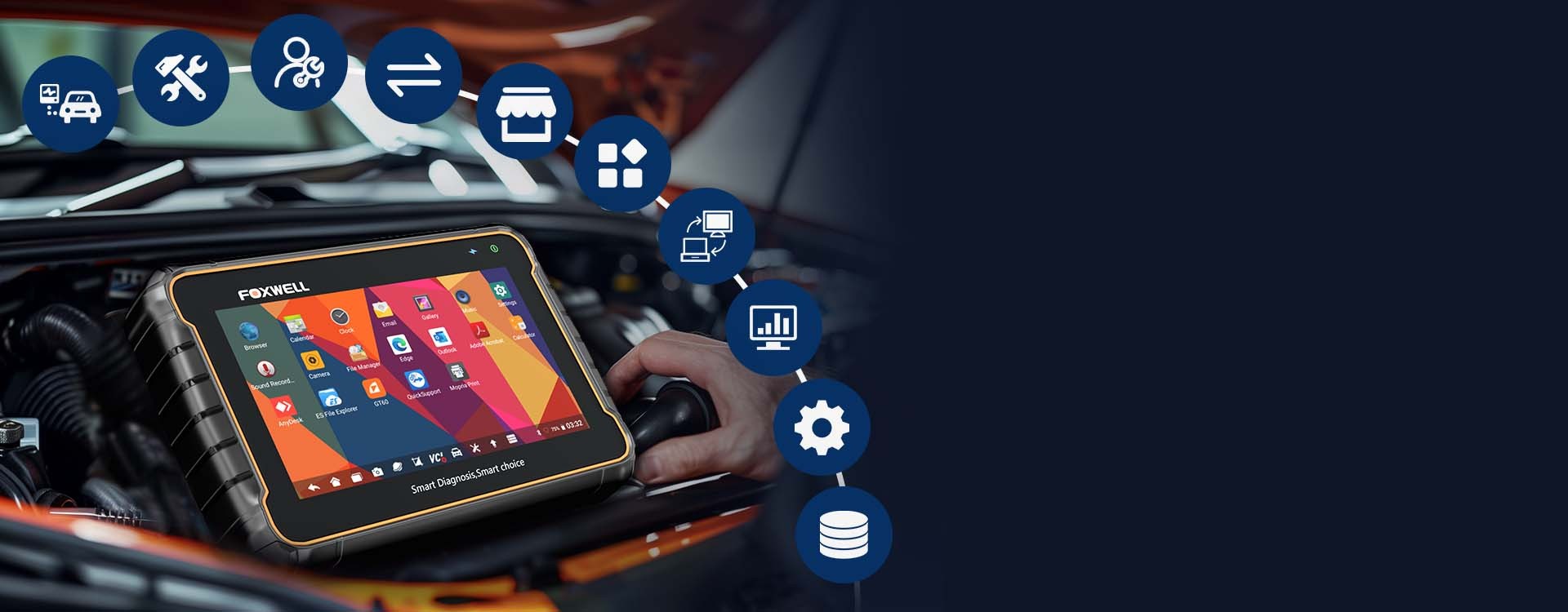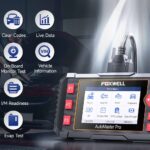Brake lights are vital for road safety, acting as a clear signal to drivers behind you whenever you decelerate or stop. Ensuring they are functioning correctly is not just a matter of legal compliance but a critical safety measure. Many drivers wonder, “can an OBD2 scanner tell if lights are out?” While an OBD2 scanner isn’t designed to specifically announce “brake light out,” it’s a powerful tool that can indirectly help diagnose issues with your brake lights by identifying related electrical problems within your vehicle’s system.
Understanding Brake Light Functions
Brake lights are a fundamental safety feature in every vehicle. Their primary role is to alert drivers behind you that you are braking, preventing potential rear-end collisions. This is especially crucial in busy traffic conditions or when you need to make sudden stops.
Beyond collision prevention, brake lights significantly enhance your vehicle’s visibility, particularly in low-light situations such as nighttime, fog, or heavy rain. The bright red illumination is easily noticeable, ensuring other drivers are aware of your vehicle’s presence and actions, thereby minimizing accident risks. This enhanced visibility is a cornerstone of road safety, giving other drivers ample time to react appropriately.
Furthermore, operational brake lights are legally mandated in most jurisdictions. Driving with malfunctioning brake lights can lead to fines and significantly increases the chance of accidents. Law enforcement regularly checks for brake light functionality during vehicle inspections. Therefore, maintaining your brake lights in optimal working condition is both a safety precaution and a legal responsibility.
How OBD2 Scanners Aid in Brake Light Diagnosis
An OBD2 scanner, such as the Foxwell NT809BT, serves as an invaluable diagnostic tool for a wide range of vehicle problems, including those affecting your brake lights. While it doesn’t directly report “brake light failure,” it excels at performing in-depth diagnostics, reading and clearing fault codes, and providing real-time data. This capability is crucial in pinpointing the root causes of brake light issues.
Detecting Electrical Fault Codes
The Foxwell NT809BT is adept at identifying electrical problems that could impact your brake lights. It scans your car’s electronic systems and retrieves diagnostic trouble codes (DTCs) related to the brake light circuit. These codes can reveal various issues, from simple problems like burnt-out bulbs and faulty brake light switches to more complex problems like blown fuses or wiring issues. Quickly identifying these fault codes allows for prompt repairs, ensuring your brake lights remain operational and safe.
Comprehensive Brake System Diagnostics
Modern vehicles are equipped with sophisticated sensor networks that monitor the brake system, including components directly related to the brake lights. The Foxwell NT809BT can access and interpret data from these sensors, aiding in the diagnosis of malfunctions that might prevent your brake lights from working correctly. For instance, it can detect problems within the Anti-lock Braking System (ABS) or issues with the brake light switch itself, both of which can directly affect brake light functionality. This comprehensive diagnostic capability ensures that all potential causes are considered and addressed effectively.
Live Data and Advanced Features
The Foxwell NT809BT offers real-time data and advanced diagnostic features that are essential for detailed troubleshooting. It allows you to monitor the performance of the brake light circuit and related components while your vehicle is running. This live data stream provides a clear, dynamic view of what might be causing intermittent brake light failures or other elusive issues. This feature is particularly useful for diagnosing problems that don’t trigger permanent fault codes but still affect brake light operation.
Common Brake Light Problems and Solutions
Understanding common brake light issues and their solutions can help you address problems efficiently, especially when used in conjunction with an OBD2 scanner for diagnosis confirmation.
Burnt-Out Bulbs
The most frequent cause of brake light failure is a burnt-out bulb. Here’s how to check and replace them:
- Check the Bulbs: Ask someone to observe your brake lights as you press the brake pedal, or park near a reflective surface to check the reflection. If a light doesn’t illuminate, the bulb is likely burnt out.
- Replace the Bulbs: Consult your vehicle’s owner’s manual for the correct bulb type. Access the light assembly, typically from inside the trunk. Remove the cover, extract the old bulb, and insert the new one securely.
- Test the Lights: Press the brake pedal again to ensure the new bulb is working correctly.
Faulty Brake Light Switch
A malfunctioning brake light switch can cause brake lights to either remain constantly on or not activate at all. Here’s how to handle this:
- Locate the Switch: The brake light switch is usually situated near the top of the brake pedal.
- Test the Switch: Disconnect the switch and use a multimeter to check for continuity. It should only show continuity when the pedal is pressed. If not, the switch is faulty.
- Replace the Switch: Unscrew and disconnect the old switch. Install the new switch, ensuring it’s properly adjusted to engage when the brake pedal is pressed.
Blown Fuses
Blown fuses are another common culprit for brake light issues. Here’s how to check and replace them:
- Locate the Fuse Box: Refer to your vehicle’s manual for the fuse box location, often under the dashboard or in the engine compartment.
- Identify the Brake Light Fuse: The manual will specify which fuse controls the brake lights.
- Inspect the Fuse: Remove the fuse and check for a broken wire inside. If broken, the fuse is blown.
- Replace the Fuse: Replace it with a fuse of the same amperage. Test the brake lights after replacement. If it blows again immediately, there may be a short circuit requiring further diagnosis.
Step-by-Step Guide to Diagnose Using an OBD2 Scanner
Using an OBD2 scanner systematically can significantly streamline the process of diagnosing brake light problems:
- Connect the Scanner: Plug your OBD2 scanner into your vehicle’s diagnostic port, usually located under the dashboard on the driver’s side.
- Read Codes: Turn on your vehicle’s ignition (no need to start the engine) and follow the scanner’s prompts to read stored trouble codes. Look for codes related to the brake light circuit, ABS, or general electrical system faults.
- Interpret Codes: Use the scanner’s built-in code library or an online OBD2 code database to understand the meaning of each retrieved code. Codes indicating electrical issues or brake system faults are particularly relevant.
- Inspect and Repair: Based on the diagnostic codes, perform targeted inspections. Replace burnt-out bulbs, check and replace fuses, or consider replacing the brake light switch. After repairs, clear the codes with the OBD2 scanner and re-test the system.
Conclusion
While an OBD2 scanner like the Foxwell NT809BT won’t announce “brake light out” directly, it is an indispensable tool for diagnosing the underlying electrical and system issues that cause brake lights to fail. It provides valuable insights through fault codes and live data, guiding you to the root of the problem. Regular vehicle maintenance, combined with the diagnostic capabilities of an OBD2 scanner, is crucial for ensuring your brake lights and overall brake system remain in optimal condition, keeping you and other drivers safe on the road.
FAQs
Will an OBD2 Scanner Read Brake Codes?
Yes, OBD2 scanners are capable of reading brake-related codes, including those associated with the brake light circuit and ABS.
How to Manually Check If Brake Lights Are Out?
The easiest way is to press the brake pedal while parked facing a reflective surface or have someone visually inspect the lights for you.
Which OBD2 Scanner Provides Comprehensive Diagnostics for Car Issues?
The Foxwell NT809BT is known for providing comprehensive diagnostic coverage across all major vehicle systems, making it an excellent tool for in-depth car maintenance and repair.

